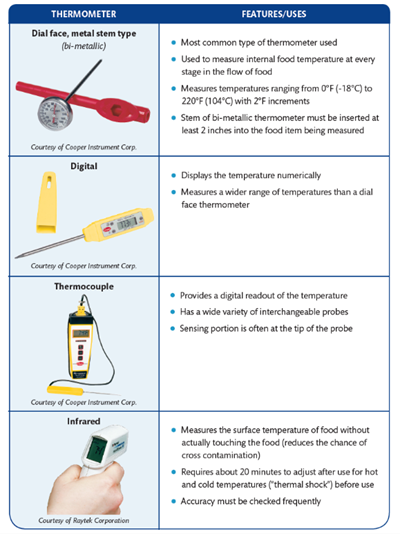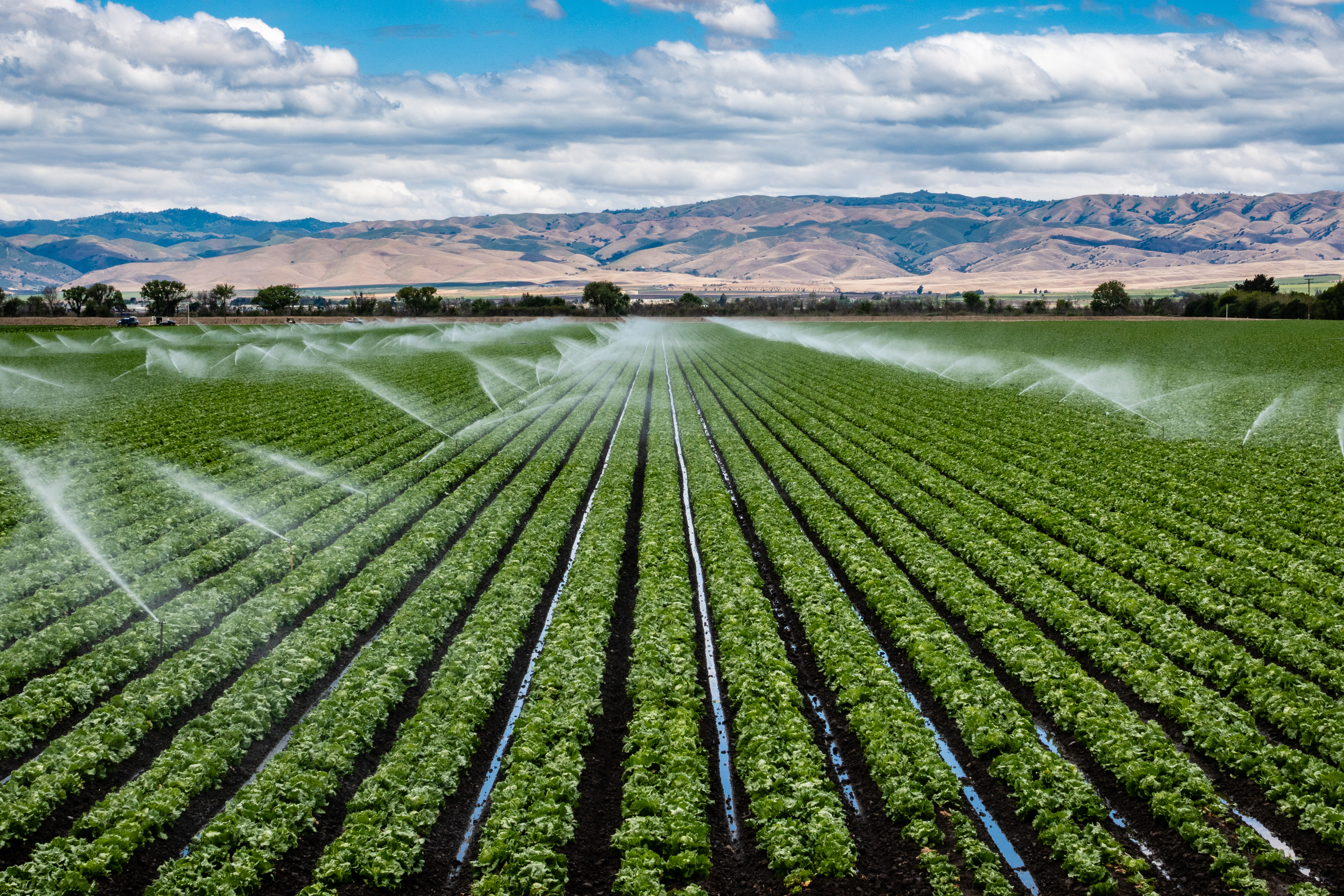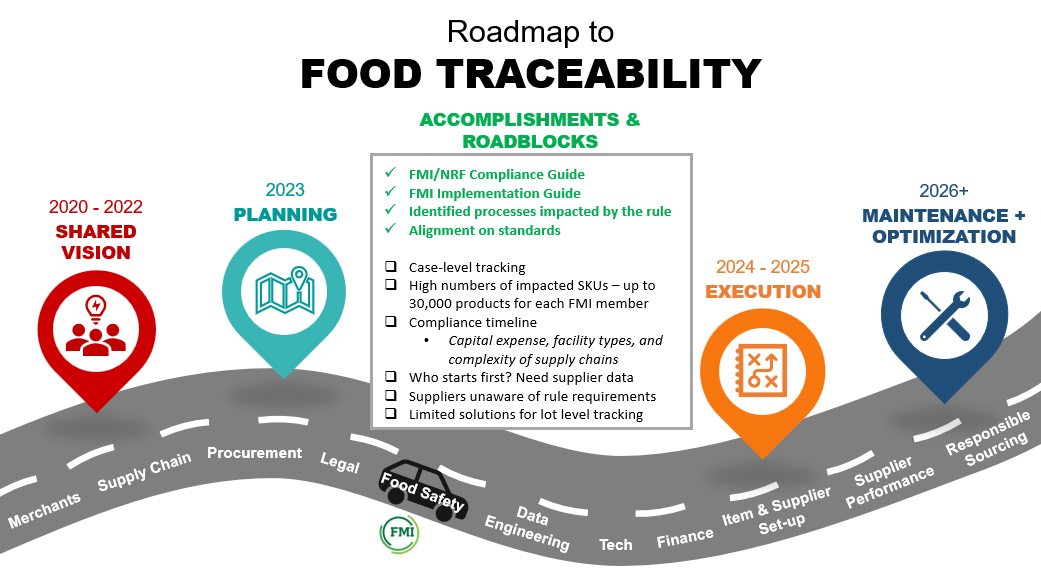By Adam Friedlander, MS, CFS, Manager, Food Safety and Technical Services, FMI

Food retail establishments and family households utilize many tools to ensure food safety in their kitchens. Potable water and hand soap help clean dirty hands, separate cutting boards and plates help reduce cross-contamination between raw and ready-to-eat products, and ovens and stoves provide a source to physically cook food. Each of these tools, among many others, play an important role in keeping the food supply safe.
But a clean, sanitized and calibrated food thermometer is arguably the most powerful tool in the kitchen because of its ability to reliably verify a product’s safety against pathogenic bacteria, like Shiga toxin-producing E. coli, Salmonella, Listeria, and Campylobacter. Alongside food safety, a thermometer also has the power to alert cooks when a food has reached its desired “doneness,” texture and tastiness. In short, the food thermometer empowers individuals to cook with confidence!
At home, I use an instant-read, digital food thermometer for all my cooking and monitoring needs, but other thermometers like a dial-stem, infrared or thermocouple can also provide accurate results when used in accordance with their manufacturer instructions. Furthermore, food thermometers are used in refrigerators and freezers to ensure proper appliance functionality. Food thermometers, known in the food industry as food temperature measuring devices, are most effective when:
- Cooking meat, poultry, eggs, seafood, and frozen vegetables so they reach a safe internal temperature. It is a best practice to insert the probe into the thickest part of the food to guarantee the food has reached its safe temperature. Undercooking is a serious public health threat, so do not stress about slight overcooking.
- Determining if a shipment or food delivery order was received at a safe temperature or within the temperature danger zone. Place the thermometer between the packaging of these products to measure the temperature of these items, but do not puncture the package with the probe.
- Monitoring a refrigeration or freezer unit for proper temperature control. Refrigerators should be constantly held below 41° F and freezers should be constantly held below 0° F. Discard the food items if they were not held under proper temperature control for more than two hours.
The FMI Food Safety team is comprised of food scientists who advocate for everyone to practice the core four food safety practices: Clean, Separate, Cook, Chill. Our team and our industry recognize the potential for food thermometers to keep our food safe, high quality and delicious. For this reason, we continue to embark on a journey to help make family meals more enjoyable and safer for everyone.
In March 2019, the FMI Foundation and Partnership for Food Safety Education released the Safe Style Recipe Guide to support all consumers and industry professionals in developing, and inserting, specific food safety text that promotes positive cooking behaviors within recipes. This guide directly addresses four primary areas of concern in the home kitchen: (1) cooking/storage temperatures; (2) handwashing; (3) cross-contamination; and (4) produce handling. The Safe Recipe Style Guide is the perfect opportunity to increase food safety education efforts when following or creating recipes. Furthermore, this guide helps individuals of all ages, from kids to adults, learn new food safety awareness skills within the kitchen.
To become a smarter food safety professional, we must leverage tools and data to help make more informed cooking decisions. By promoting the power of food thermometers, we can all become better cooks, but more importantly, we can leverage data to prevent foodborne illness across our communities.
To learn more about how to use food thermometers at the retail level, please visit FMI’s premiere food safety training resources page: www.fmi.org/safemark


 Industry Topics address your specific area of expertise with resources, reports, events and more.
Industry Topics address your specific area of expertise with resources, reports, events and more.
 Our Research covers consumer behavior and retail operation benchmarks so you can make informed business decisions.
Our Research covers consumer behavior and retail operation benchmarks so you can make informed business decisions.
 Events and Education including online and in-person help you advance your food retail career.
Events and Education including online and in-person help you advance your food retail career.
 Food Safety training, resources and guidance that help you create a company food safety culture.
Food Safety training, resources and guidance that help you create a company food safety culture.
 Government Affairs work — federal and state — on the latest food industry policy, regulatory and legislative issues.
Government Affairs work — federal and state — on the latest food industry policy, regulatory and legislative issues.
 Get Involved. From industry awards to newsletters and committees, these resources help you take advantage of your membership.
Get Involved. From industry awards to newsletters and committees, these resources help you take advantage of your membership.
 Best practices, guidance documents, infographics, signage and more for the food industry on the COVID-19 pandemic.
Best practices, guidance documents, infographics, signage and more for the food industry on the COVID-19 pandemic.
